The history of the world is littered with tales of corruption, battle, greed, victory, tumult, sickness, and passing —and of course, tragedy. Forget Aeschylus, Sophocles, and Euripides, the most tragic figures in the world often come from our own history. From those in the wrong place at the wrong time to famous last words to people whose entire lives seemed to court heartbreak and disaster, there's no shortage of sad stories to help us realize that sometimes, life just isn't fair. Here are 109 heartbreaking facts about history's most tragic figures.
1. The Luckiest Unlucky Man
Clifford Johnson was injured at the deadliest nightclub fire in history, at the famous Cocoanut Grove in 1942. He suffered third-degree burns over more than half his body but survived, and was seen as a medical marvel. After hundreds of operations and nearly two years in the hospital, he married his nurse. In an ironic twist of fate, he burned in a car crash in 1958.

2. Sealed With a Bank Note
Edward VI of England was the only surviving son of the infamous Henry VIII. Since Henry literally tore apart churches and dispatched wives in search of that elusive thing called a “male heir,” it’s all the more tragic (or just ironic) that said heir only reigned for six-and-a-half years. In 1551, Edward was betrothed to the French princess, Elisabeth of Valois (daughter of Henri II of France and Catherine de Medici). Peace with the French was financially necessary at this point; England was in dire economic straights and could no longer cover the cost of its wars.

3. Anyone But Her
By February 1553, Edward’s health was in critical condition. The teen was clearly not going to marry and father an heir anytime soon, but his heir was his Catholic half-sister, Mary Tudor. This would not do for the all-Protestant council. As a devout Protestant, Edward himself opposed Mary’s ascension.

4. Hello Darkness, My Old Friend
By the end of his life, Edward lost the ability to walk; the king’s legs were so swollen that he had to lie on his back all day. A realistic child to the end, Edward was ready to get it over with and told his tutor, “I am glad to be gone". He passed at Greenwich Palace on July 6, 1553—three months shy of his 16th birthday.

5. The Second Kick
Edward might have survived his fatal 1553 bout with tuberculosis if he'd been a bit stronger. But in 1552, he battled with smallpox and measles; it’s believed this wrecked his royal immune system and left him vulnerable to further infection.

Circle of William Scrots, Wikimedia Commons
6. Miss This Sis
To remedy his nightmare of England going Catholic if Mary were crowned, Edward changed his father’s will. He amended his father’s inclusion of half-sisters Mary and Elizabeth in the succession and used their lawful illegitimacy and their gender as grounds for exclusion. To put it bluntly, Edward barred his mostly-beloved sisters from inheriting the throne.

7. Girls Allowed Eventually
On his deathbed, Edward skipped over his sisters to give the throne to the male heirs of his relatives, the Greys. However, at this stage, there were no other living male Grey-Tudors to inherit his throne. Since sons take at least 9 months to make, and Edward wouldn’t live that long, he relented and allowed the Grey women to inherit the throne themselves.

8. The 60-Second Successor
Edward’s dying request went bust, and Jane Grey was largely resisted as Queen of England. His sister Mary waged her own forces to challenge Jane’s accession, which is why Jane is the “Nine Days Queen” instead of the “Long Lasting Queen So Spake Edward VI Who’s Too Gone To Do Anything About It Now". For a time, Edward’s nightmare came true and England “enjoyed” a four-and-half-year return to Roman Catholicism under Mary I.

9. It’s Not Very…Novelistic
After receiving a $2,080 novel-writing fellowship from a publisher, Sylvia Plath likely expected that they would publish The Bell Jar, but much to her frustration, they rejected it. They called the book “disappointing, juvenile, and overwrought,” which is definitely not what an author is hoping to hear. While she did find a British publisher for it, she struggled to find an American publisher, with one telling her: “We didn’t feel that you had managed to use your materials successfully in a novelistic way". Ouch!


History's most fascinating stories and darkest secrets, delivered to your inbox daily.
10. Promise Me
The end of Plath’s father when she was just 8 years old reinforced her fear of abandonment. She was so worried about it that she wrote a contract for her mother to sign making her promise never to remarry—her mother signed it.

11. Not as Expected
The reception for The Bell Jar was definitely not what Plath was hoping for. The book received mostly apathetic reviews, and Plath was disappointed at being passed over. She passed just a few weeks later, and never lived to see its eventual success.

12. We’re Working on It
Plath and Hughes separated in September 1962, after she found out about his affair with Assia Wevill. Plath was reportedly devastated by his infidelity, but in a foreword for Ariel, Plath’s daughter wrote that her father thought that Plath might reconsider and that they were “working towards it” at the time of her passing.

13. A Terrifying Encounter
In her journals, Plath wrote about a horrible experience she had on a blind date in her first year of college. Although the date was initially going well, the date turned into creepy psycho once they left the restaurant, telling her that he wanted her to be all his before attempting to sexually assault her. The experience had a painful effect on Plath, and she described knowing that she’d be afraid to ever be alone or even to take a walk again, and she hated him for it. And rightly so!

14. A Zap to the Brain
As treatment for depression, Plath received electroshock therapy. Her first treatment was at age 20, after her first self-immolation attempt, and she pulled from these experiences to write The Bell Jar.

15. Testing the Waters
Plath’s first self-immolation attempt came in her third year of college, which was the time in her life that served as the inspiration for The Bell Jar. She cut her legs to see if she had the courage to end herself. It was just a few weeks later that she tried it for real.

16. Foreshadowing
In the 1962 poem The Lady of Lazarus, Plath wrote a passage about dying that includes the lines “Dying Is an art, like everything else. I do it exceptionally well". Just four months later, life, the words of the poem came true, and she passed by self-immolation.

17. Four Little Words
Sylvia Plath was found passed by self-immolation on February 11, 1963. She's sealed herself in the kitchen and stuck her head in the oven, dying by carbon monoxide intoxication. Her safety precautions of sealing the kitchen off spared her children. Plath’s self-immolation note was made up of just three words. It read “Call Dr. Horder,” and listed his phone number. Since then, people have debated whether or not she actually intended to end herself, or if it was supposed to be a cry for help. Sadly, the world will likely never know.

Shutterstock
18. Double Tragedy
Ted Hughes, Plath’s husband, experienced tragedy for a second time when his mistress Assia Wevill, for whom he left Plath, end herself in a way that was similar to Plath. Unlike Plath, who left food and water for her children and ensured they were safely in their room, Wevill gave her four-year-old daughter sleeping pills before taking some herself, turned on the gas stove, laid down with her on a bed she’d dragged into the kitchen, and waited to be gone.
![]()
19. Let Them Eat Cake, Please
While walking to the guillotine, Marie Antoinette, the hapless last Queen of France, stepped on her executioner’s foot. Her last words spoken to any one person were apparently “Pardonnez-moi, monsieur".

20. Deadly Defense
In 1871, a lawyer named Clement Vallandigham accidentally shot himself while defending a vicious suspect. He was trying to demonstrate that the victim could have accidentally shot himself. The client was acquitted, but the lawyer passed.

21. The Beheaded Man’s Revenge
A ninth-century Norse earl named Sigurd the Mighty was ended by an enemy he had beheaded hours earlier. He tied the severed head to his horse’s saddle, but on the ride home the man’s tooth scratched his leg. The resulting infection ended the earl.

22. Reunited
Actor Jimmy Stewart was married to his wife Gloria for 44 years before she passed in 1994. Stewart never got over her passing. As he himself lay dying three years later, he turned to his family and said, “I am going to be with Gloria now".

23. Hands Off
Queen Sunanda Kumariratana of Siam (now Thailand) passed when her boat capsized in 1880. Many witnesses stood by, unable to help, because it was a capital offense to touch the queen.

24. The Fall of the King
King Albert of Belgium disappeared while rock-climbing in 1934. His body was found, but it wasn’t until 2016 that DNA evidence proved that he passed from a fall, putting to bed the conspiracy theories that had existed for decades.

25. Survivor
Imagine the odds of being struck by lightning twice. Pretty rare. I'm sure if that happened to you, you'd think you must have been cursed by some sort of vindictive witch. So imagine the confusion and suffering of Tsutomu Yamaguchi, a Japanese man who survived the blasting of Hiroshima... only to move to Nagasaki and experience that blasting as well. The torment he must have experienced is beyond belief.

GettyImages
26. Never Tear Us Apart
Tragedy has sadly haunted the children of Paula Yates. Although not a rock star, the Welsh TV presenter was involved with two big names in the world of music: Bob Geldof of The Boomtown Rats, and Michael Hutchence of the band INXS. She had three daughters with Geldof before they divorced. She gave birth to a daughter, Heavenly Hiraani Tiger Lily, with Hutchence in 1996, but in 1997, Hutchence passed by self-immolation .
The next few years of Yates' life were unsurprisingly hellish. She denied all claims that Hutchence's passing was intentional, and claimed that Geldof had previously threatened her and told her that he was above the law. She spent time in psychiatric treatment and lost custody of her daughters with Geldof after a self-immolation attempt. While fighting for custody of her daughters, she discovered that the man she thought was her father actually was not, and that her biological father had passed months prior.
Sadly, things were about to get worse.
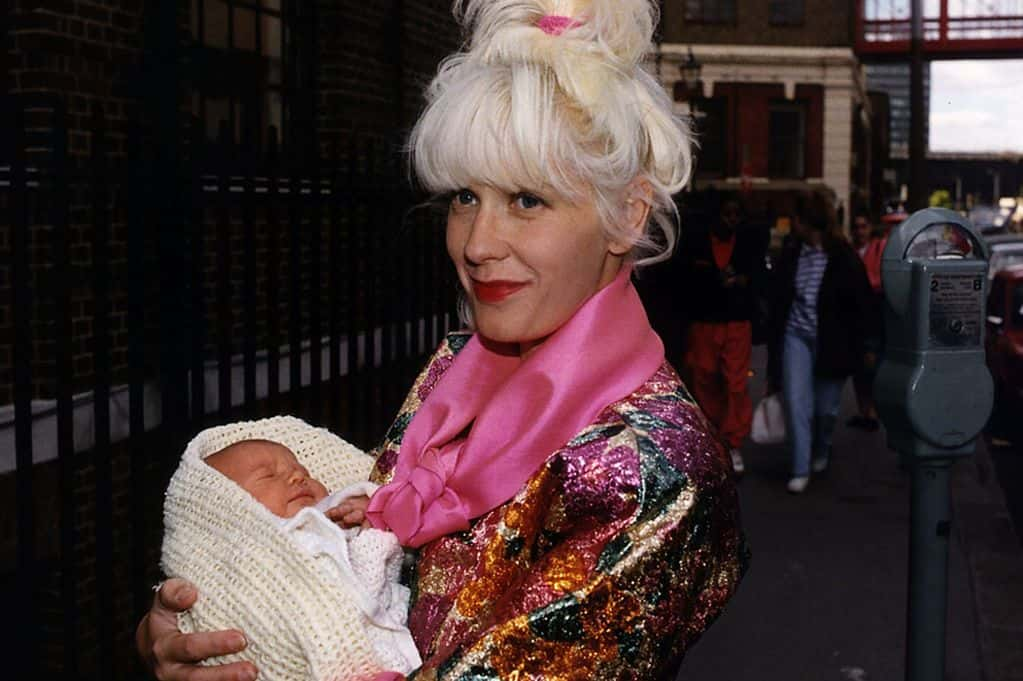
Paula Yates
27. Tragedy Upon Tragedy
Paula Yates passed by accidental drug use in 2001, leaving behind four children, and leaving her daughter Tiger Lily orphaned. Geldof stepped up and adopted Tiger Lily so that she could grow up with her sisters, but their nightmare wasn't over yet. In 2014, Yates and Geldof's daughter Peaches also passed from drug use. Hopefully, for the remaining members of the Geldof-Yates-Hutchence clan, that horrible chapter of their lives is closed.

Peaches Geldof
28. Equal Opportunity Execution
In the days when Henry VIII was getting ready to burn all the bridges in the world by divorcing his wife to marry Anne Boleyn, one woman turned to prophecy to stop him. In 1532, a Catholic nun (and mystic) named Elizabeth Barton prophesied that if the King married Anne Boleyn, he would meet his end and go to underground. She was promptly detained by the next year and forced to admit that she’d made it all up (which, let's be fair, she probably did).
Barton was beheaded for her treason and her head was put on a spike on London Bridge. She remains the only woman in history to have her head decorate the bridge.

29. For Witchcraft and Treason...
When Anne Boleyn was brought to the scaffold to be executed, she begged leave to address the crown, and was granted the right to do so. Despite the limited evidence against her, she said, "Good Christian people, I am come hither to pass, for according to the law, and by the law I am judged to be executed, and therefore I will speak nothing against it. I am come hither to accuse no man, nor to speak anything of that, whereof I am accused and condemned to be executed, but I pray God save the king and send him long to reign over you, for a gentler nor a more merciful prince was there never: and to me he was ever a good, a gentle and sovereign lord. And if any person will meddle of my cause, I require them to judge the best. And thus I take my leave of the world and of you all, and I heartily desire you all to pray for me. O Lord have mercy on me, to God I commend my soul".
As she awaited the executioner's blade, kneeling on the block, she repeated the phrase, "To Jesus Christ I commend my soul; Lord Jesu receive my soul".

30. Mismanagement
As one of the biggest pop stars on the planet, Selena Quintanilla was supposed to be protected by her management. When Selena signed Yolanda Saldivar as one of her agents in 1994, she thought she was getting someone with a keen eye for business. Perhaps that eye was too keen; although former employees of Saldivar complained to Selena of her erratic behavior as a boss, few could have predicted that Yolanda was actually embezzling a huge sum of money from Selena’s loyal fans.
After receiving a number of complaints about a fake fan club, Selena and her team began to investigate only to discover that Saldivar was cashing the cheques for herself. She had embezzled around $30,000. The discovery of this scheme would eventually lead to Selena’s killer.

31. End of a Dream
Because Yolanda Saldivar had access to bank records and other important information for Selena, she did not want to go to the officers when she found out her agent was embezzling money from fans. So she decided to meet Saldivar in person to get back her financial papers. On March 31, 1995, in a hotel room in San Antonio, the desperate Saldivar pulled a pistol on Selena and fatally shot the young star in the back. After a nearly 10 hour standoff with the FBI, Yolanda surrendered.

32. No Heir, No Empire
Alexander the Great succeeded in forging the largest Western empire of the ancient world-- only for it to fall apart because he never named an heir. Shortly before his passing, Alexander was asked who should succeed him. He responded simply, “the strongest"... as though that was a helpful answer. As it turns out, men who've spent their lives conquering much of the known world tend to be a little competitive.
Upon his passing, Alexander's generals immediately vied to fill the power vacuum... leaving his carefully crafted empire to crumble.

33. Houston We Have A Mistake
Approximately 17% of Americans were watching on the morning of January 28, 1986, as the Space Shuttle Challenger launched toward space. On-board were 6 NASA astronauts, as well as Payload Specialist Christa McAuliffe, who was set to become the first teacher in space. Tragedy struck just 72 seconds after liftoff. Gasses in the external fuel tank mixed, exploded, and tore the shuttle apart,ending all 7 crew members.
Prior to the disaster, the builder of the solid-rocket boosters, advised NASA that they believed the O-ring seals in the solid-rocket boosters could fail at extremely low temperatures. On the day of the launch, the temperature was 15 degrees colder than any previous launch in history.
34. Lennon and McCartney
When The Beatles broke up, the already-rocky relationship between Paul McCartney and John Lennon became more fraught. Throughout the 70s, the pair rarely spoke, occasionally reuniting for brief periods. Although they'd left things in a good place during their final phone call, this was something the public didn't know, and so, when Lennon was ended, reporters swarmed McCartney for a quote. Distraught, he was only able to say "It's a drag".
He was criticized for being flippant about his friend's passing, but he later revealed his true feelings about the loss, saying: “The last telephone conversation I had with him we were still the best of mates. He was always a very warm guy, John. His bluff was all on the surface. He used to take his glasses down, those granny glasses, and say, "it's only me". They were like a wall you know? A shield. Those are the moments I treasure".
He said on the night that Lennon was gone, he went home to his family and watched the news coverage, spending the whole night crying.

35. Fine, How About You?
More worried about the fate of his companions than about his own fatal injuries after he was shot at The Ambassador Hotel, presidential candidate Robert Kennedy's last words were, “Is everybody all right?”

36. In the Flower of Her Youth
On December 20, 2009, rising Hollywood star Brittany Murphy passed at the tragically young age of 32. While the cause of her end was originally listed as natural causes, a subsequent report blamed her passing on “a combination of pneumonia, anemia, and prescription and over-the-counter drug". Five months after Murphy’s passing, her husband, Simon Monjack,passed in the same bedroom that Murphy had been in.
In a disturbing coincidence, the cause of his passing was also listed as pneumonia and anemia.

37. This Is the End
Mata Hari’s execution took place on the on the 15th of October 1917 (just two days away from being another important 13th day!). According to the testimony of journalist Henry Wales, Hari refused to be blindfolded as she faced the firing squad who were about to take her life. She did not flinch as the army opened fire, and even after she’d been struck, her face did not change expression.
Unfortunately, for those who want a juicier story, Wales doesn’t mention anything about her supposedly stripping down to her birthday suit to persuade the army not to shoot her (as some sources have stated she did). She did, however, send a kiss to her executioners in her final moments.

38. Joining the Club
In the years leading up to her passing from booze, the soulful Amy Winehouse spoke candidly about her fear of reaching the age of 27. Knowing her own battles with substance use, Winehouse was often aware that she might join the infamous “27 Club” with the likes of Kurt Cobain, Jim Morrison, and Janis Joplin.
It was indeed to be her tragic fate in 2011, much to the despair of her friends, family, and fans.

39. Late in the Game
Just before her untimely passing in 2011 due to booze, the gifted singer Amy Winehouse vowed that she was going to settle down her hard-partying life to start a family. She had recently been given the go-ahead by doctors to attempt getting pregnant after cleaning up from a long bout of substance use. Her hope for the future makes her passing all the more tragic.

40. Friends in Strange Places
Before her execution in February 1554, Jane Grey (England's "9 Day Queen") was given three days to convert to Roman Catholicism in order to “save her soul". Mary even sent her own chaplain to convince Jane. While Jane refused to “repent” her devout Protestant beliefs, she did befriend this man and let him sent her to her end.
A devoted learner until the end, Jane asked her executioner if he was going to take off her head before she could kneel down. He replied, “No, madam". Blindfolded, she then fumbled a bit—as awkward teenagers do—to find the block with her hands and cried, “What shall I do? Where is it?” A deputy helped guide her. Right before her head was struck off, Jane drew her last words—the same last words of Jesus Christ in Luke: "Lord, into thy hands I commend my spirit!" and then passed on 12 February 1554. She was 16 or 17 years old.
The alleged ghost of Jane Grey has made several appearances at the Tower of London. Her most famous reported sighting was in 1957, when two guards say they spotted a phantom woman walking above the battlements. Since then, her ghost is said to pop up around the time of her passing anniversary.

41. Profound Coincidence
One day during the recording of “Shine On You Crazy Diamond,” a tribute to their former member Syd Barrett, Pink Floyd were visited by an overweight, bald man with shaved eyebrows. He behaved strangely, even brushing his teeth during the session. After a while, the band realized that it was none other than Barrett himself.
Roger Waters was reportedly so overcome by Barrett’s physical transformation and sudden appearance that he began to cry. For his part, Rick Wright found it “disturbing” that Barrett had picked that day of all days to come to visit his old band. Barrett, meanwhile, seems to have thought little of it; he quietly left later that day when the band was preoccupied with a celebration for David Gilmour’s wedding. It was one of the last times they ever saw him before his passing in 2006.

42. Privilege With a Capital ‘P’
Emperor Liu Shan was born with a golden spoon in his mouth, so to speak. His father had established the state of Shu Han in the time when China was divided into three kingdoms (Wei, Wu, and Shu Han). Even with reliable advisors and a good starting point, Liu Shan’s incompetence and his preference to delegate while he enjoyed luxury led to him being forced to surrender to the ruler of Wei state in 263 AD. His infant name, “Adou,” is used in China to this day as a metaphor for people who are born with all the opportunities in life but can’t do anything except squander them.
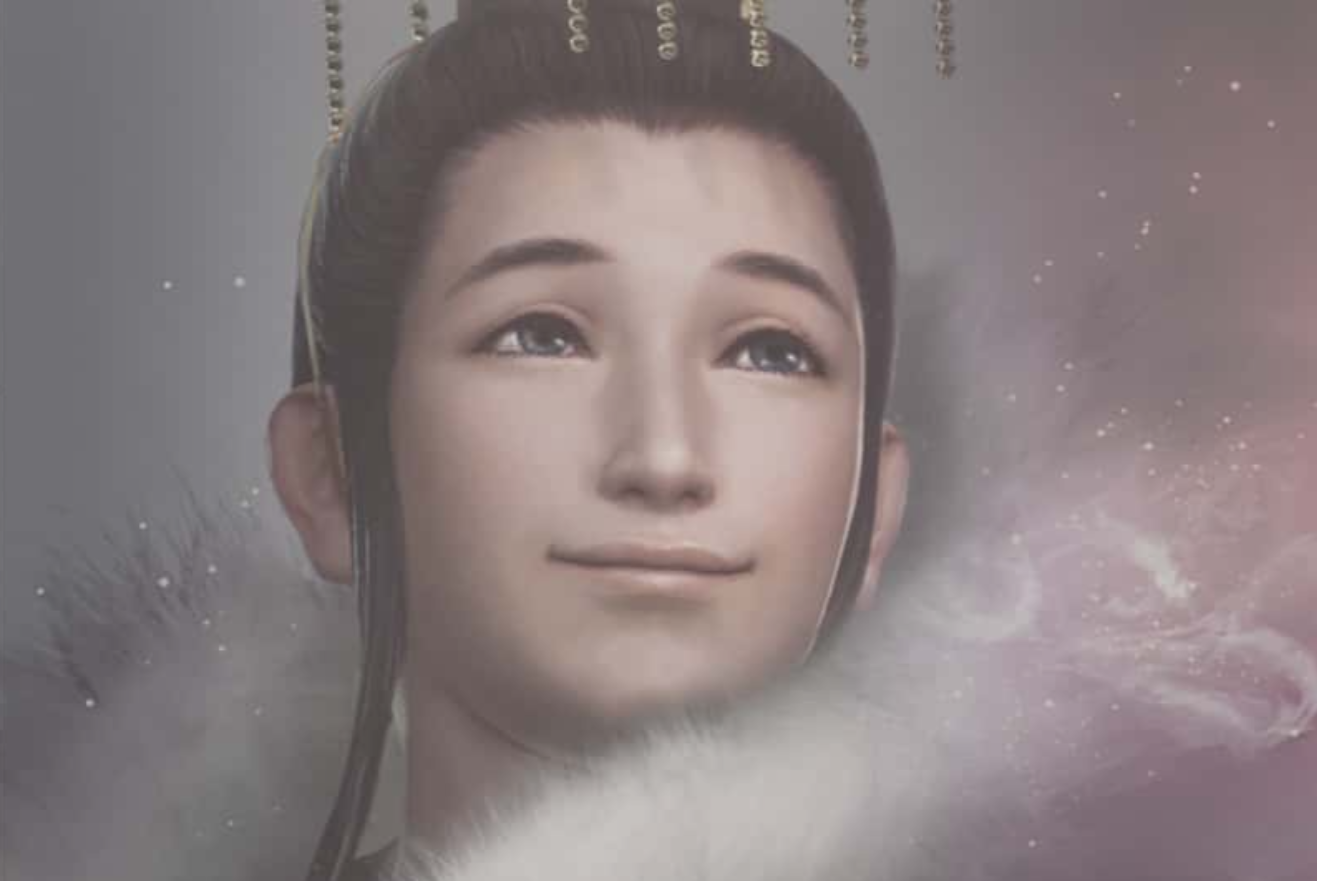
43. Annus Horribilis
The marriages of Queen Elizabeth II’s three divorced children all ended in one tragic year: 1992. Princes Charles and Andrew, and their wives Princess Diana and Sarah, Duchess of York, were dragged through the media by tabloids, which in Britain can be even more sensational than those in the US. The affair between Prince Charles and Camilla Parker-Bowles as well as his wife Princess Diana’s infidelities were much-publicized. In addition, on November 20, 1992 (the Queen’s wedding anniversary) a fire broke out in Windsor Castle, the Queen’s residence, causing extensive damage. Elizabeth would later refer to 1992 as annus horribilis, Latin for “horrible year”.

44. Life Less Travelled
The inimitable French jazz guitarist Django Reinhardt certainly did not take the conventional route to the spotlight. Born in a nomadic Belgian-Romani community, Reinhardt married at the age of 17 and, due to a house-fire shortly thereafter, severely burned his left hand and paralyzed his right leg. Django had always been a musician and a skillful guitarist.
The injury left him unable to play the frets of the guitar in the traditional method, and so he decided to come up with his own method. He was able to take an unfortunate accident and forge it into one of the most unique sounds in jazz music history. 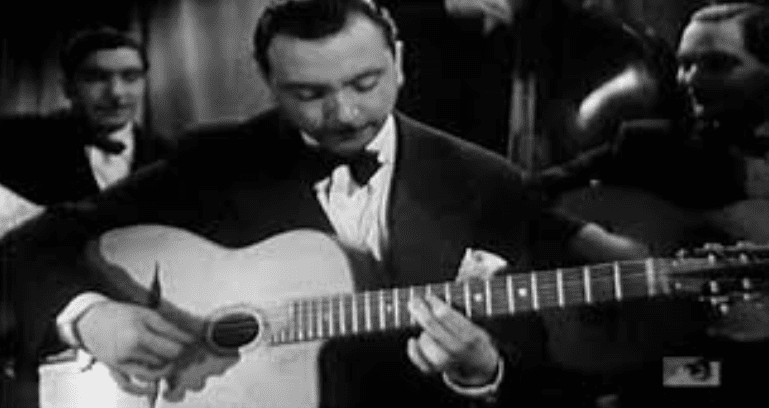
45. An Abrupt Ending
After struggling through poverty and injury to become one of the hottest jazz acts in Europe, and indeed around the world, it all ended rather abruptly for Django Reinhardt. It was a rather pleasant day in Paris on May, 16, 1953. The 43-year-old Reinhardt had just finished playing a show and was reaching the steps of his home when he suddenly suffered a brain hemorrhage.
Collapsing at his front door, Reinhardt was unable to see a doctor for an entire day, since it was Sunday. By the time he made it to a hospital, it was too late: he had passed from a stroke.
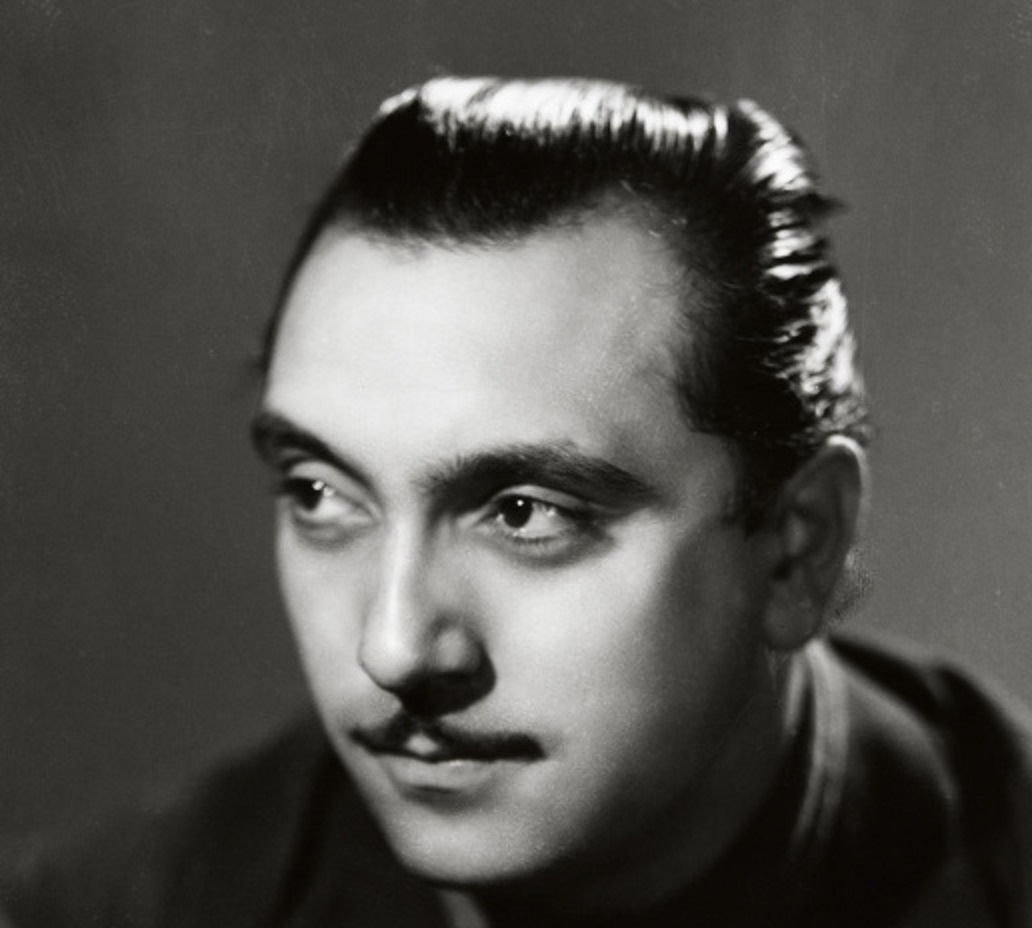
Studio Harcourt, Wikimedia Commons
46. A New Heir
Anne Neville was born in 1456 in Warwick Castle, Warwickshire, England, and was the younger daughter of Richard Neville, Earl of Warwick, and Anne Beauchamp. She is best known for being the Princess of Wales while being married to Edward of Westminster, and then as Queen of England with her second marriage to Richard III. Neville gave birth to a son, Edward, shortly after her marriage to Richard in 1473, but tragically, the boy was always pretty frail, and he passed when he was 10 years old, just shortly after Anne was crowned Queen.

47. Trading Her in
After the passing of their child, there were whisperings that Richard wanted Neville out of the way so he could marry his niece, Elizabeth of York, and strengthen his claim to the throne—but seeing as how he’d already declared his brother’s children illegitimate, marrying her would have held no advantage.

The White Queen, BBC Drama Productions
48. Suspicious End
Maybe because of all of the scheming and plotting that took place on the part of all of the York brothers, when Queen Anne Neville passed in 1485, her husband Richard, never the most trustworthy gentleman, was suspected of infection her. As juicy as it is to imagine, this isn't terribly likely—but the truth is just as tragic.
Anne was known to be in ill health even at the time of her son’s passing, and similarly to her sister, she probably passed of tuberculosis or even cancer.

49. Predicting His Fall
There was a solar eclipse on the exact day of Anne’s passing. Some of the more superstitious types saw this as an omen of her husband King Richard's fall. True or not, Richard was defeated in battle a few months later by Henry Tudor at the Battle of Bosworth Field.

Wikimedia Commons, John Taylor
50. The Lost Queen
Neville was buried in an unmarked grave at Westminster Abbey without a memorial, possibly because Richard passed that year and just didn’t have time. The exact whereabouts of her burial are unknown, and so her tomb is technically lost. 
51. Maternal Affliction
Clara Bow is a silent film actress from the 1920s who is largely considered Hollywood’s First "It" Girl. With her tomboy charms and expressive face, Bow took Old Hollywood by storm as one of the most iconic “flapper” actresses of her day. When she was 16, Bow’s mother fell out of a second-story window and suffered brain injuries that would likely contribute to her epilepsy and psychosis.
Mrs. Bow would grow to resent her daughter and once put a blade to the teenager’s throat. The assault led to her mother’s commitment to a sanitorium, where she later passed at the age of 43.

52. Lies Don’t Pay
In 1931, Bow became the target of a blackmail scandal. A tabloid called The Coast Reporter accused the actress of many “garish” acts, including (but not limited to): exhibition, child attack, homosexuality, drug, booze, and even venereal disease. The publisher tried to force Bow to pay $25,000 in exchange for not publishing the libel.
Fortunately, federal agents promptly caught the blackmailer and sentenced him to eight years in lock up.

53. Words Hurt
Even at the height of her success, film executives had little respect for their biggest box office draw. Some called her a “birdbrain” and “dumbbell,” even as she worked hard to bring them money.

54. It’s A Smaller World After All
Unfortunately, Bow seems to have inherited her mother’s history of mental health issues later in life. After her retirement, she became increasingly withdrawn, both refusing to interact with her husband or let him leave the house by himself.

Pixabay
55. Early Exit, Aborted
In 1944, Bow’s husband Rex Bell ran for the US House of Representatives. Tragically, at the same time, Bow unsuccessfully tried to take her own life. Bow left behind a note, where she declared that she would rather end her own life than live it so publicly.

56. Imperfect Patient
Following her self-immolation attempt, Bow resided in the Institute of Living in Connecticut for her chronic insomnia and abdominal pains. She was subjected to shock therapy and diagnosed with schizophrenia, although she never experienced hallucinations.

57. A Long Time Coming?
On September 27, 1965, Clara Bow lost her life from a heart attack in her Los Angeles home at the age of 60. Curiously, her body underwent an autopsy, which revealed that Bow had secretly suffered from atherosclerosis, a type of heart disease, which could have present since her early teens.
22 Interesting Facts About Silent Movie Star CLARA BOW, Classic Shine
58. Endless Love
Joe DiMaggio left flowers at his ex-wife, Marilyn Monroe's grave every single week for twenty years after she overdosed on barbiturates. Still deeply in love with her, when he lay on his own deathbed his final words were “I finally get to see Marilyn".
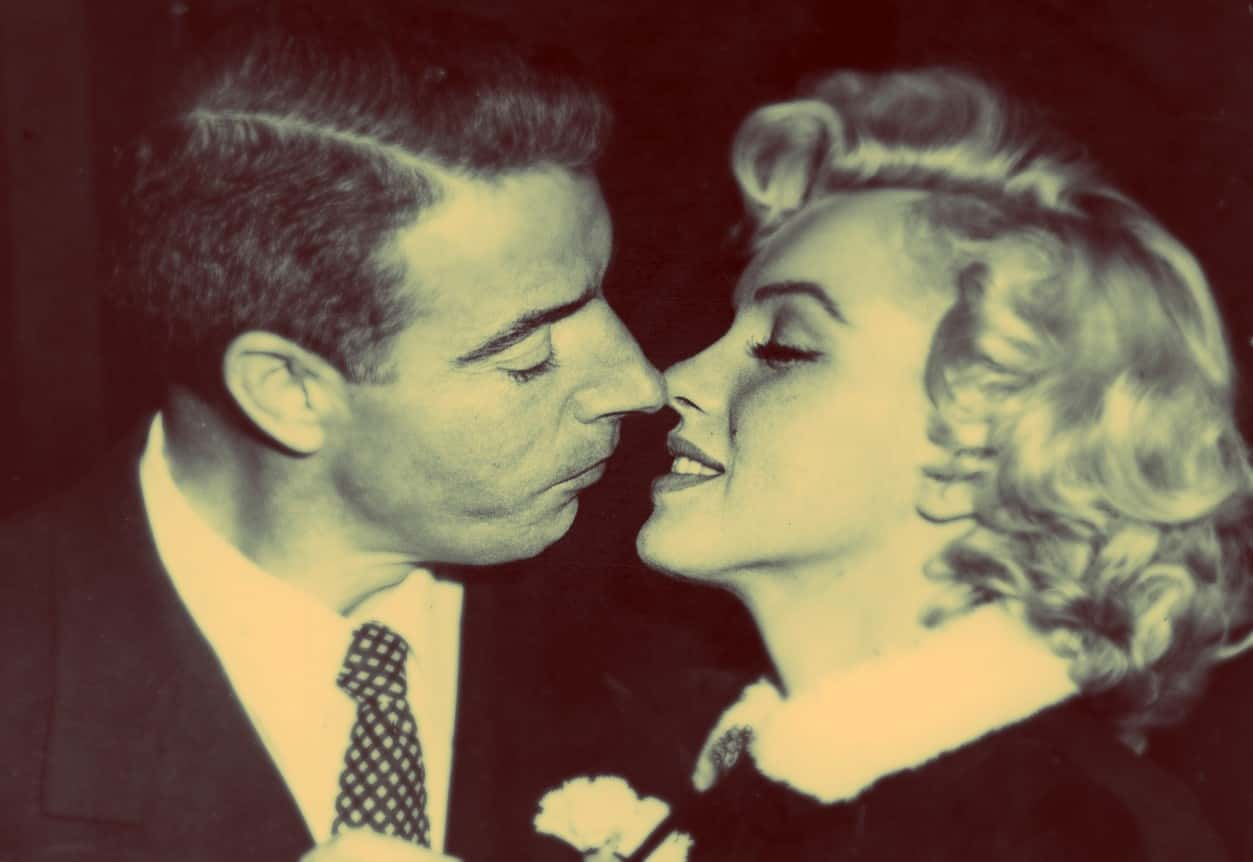
59. Who Wants That Attention?
Princes Harry and William were just in the early teens when they woke up to the news their mother, Princess Diana, had passed in a car crash. Amidst the royal family’s polarizing response to Diana’s passing in 1997, it was their grandfather, Prince Philip, who convinced William and Harry to walk behind her coffin. When the young princes were apprehensive, Philip reportedly told his eldest grandson, “If you don’t walk, I think you’ll regret it later. If I walk, will you walk with me?”
At the funeral, Philip, William, Harry, Charles, and Diana’s brother followed the bier all the way from Westminster Abbey to Buckingham Palace, as millions watched.

60. Parting “Gift”
King Francis I of France’s first wife passed in 1524 in unknown circumstances. Although complications from childbirth or tuberculosis are often cited as Queen Claude’s cause of her end, others whispered that she was infected with syphilis by her own promiscuous husband.

61. A Bummer Staycation
The Italian Wars (1494-1559) would come to define King Francis I’s army career. Although they started before his birth, this Franco-Italian grab for land put him at never-ending odds with the Holy Roman Empire. It culminated in the humiliation of his life. In 1525, the king was captured in the Battle of Pavia and held as a POW of Emperor Charles V in Madrid for almost a year.

62. My Sons for My Shackles
To free himself from the Holy Roman Empire, Francis was forced into a deal: give up his claim to Artois and Flanders…and surrender his two surviving sons, Francis and Henri, as hostages to Spain. Once he was free, Francis immediately repudiated the treaty, arguing it was made under duress.

63. Where Art Thou, Mon Père?
For four years, Francis and his mother Louise campaigned to get the Princes back from Spanish captivity. During their time in lock up, the young boys were housed in dank conditions and had forgotten how to speak French. While their release and return home was slow to negotiate, they eventually made it back to the French court and relearned their mother tongue quickly.

64. Thirsty for Answers
In a common theme for Francis’s family, his first son and heir perished in mysterious conditions in 1536. At age 18, Prince Francis, Duke of Brittany, was enjoying a round of tennis. Parched from exercise, he asked for a glass of water. The healthy boy drank it…then collapsed and passed after several days of illness. The secretary who brought Prince Francis the water was himself brought to France by Catherine de Medici.
Under pain, the secretary in question, Count Sebastiano de Montecuccoli, confessed that it was not Catherine who told him to poison the prince—his real patron was the King’s foreign enemy, Charles V of Spain. The secretary was executed, but Charles V would insist he had nothing to do with the alleged ending. History generally agrees the prince passing of sudden tuberculosis, for which the Count was violently coerced into confessing guilt.

65. Lady Day
Billie Holiday is remembered as one of the greatest jazz singers of all time. The circumstances of her final weeks on earth are utterly horrifying—she'd been pursued by agents of the Federal Bureau of Narcotics for decades, and when she was first admitted to hospital in 1959, "She was detained and handcuffed for drug possession as she lay dying, her hospital room was raided, and she was placed under officers guard". The narcotics bureau would never get the chance to pursue her legally, as she passed shortly after.

66. The Orphaned Duchessia
Just because she was born rich doesn't mean Catherine de Medici's life was easy. Hardship eventually makes a mark on us all. Within a month of her birth, illness ended both of Catherine’s parents. For the rest of her childhood, the vulnerable Medici heiress would be shuffled between relatives and convents to protect her from the family’s enemies in an increasingly volatile Italy.
Say what you will, but that's a tough childhood by anyone's standards.

67. The Republic of Male Opinions No One Asked For
Contemporaries loved to highlight that Catherine was no great beauty. Even in her youth, a Venetian envoy described Catherine as “small of stature, and thin, and without delicate features, but having the protruding eyes peculiar to the Medici family". Another observer drew attention to Catherine’s face as “heavy-looking” and her body as underdeveloped, declaring that “altogether this little girl does not look like she will become a woman for a year and a half yet".
Hey guys, she was a kid. Can we chill?

68. Gold Will Be Their Shrouds…
Despite giving birth to ten children, Catherine de Medici outlived every single one, save for Henri III (who was hurt to her end just seven months after his mother’s passing) and Marguerite (who inherited her mother’s robust health and aversion to being hurt).

69. Your 20s Are Just Like That
Charles IX, the second of Catherine de Medici's sons to become king, became emotionally unstable towards the end of his life. He would fluctuate from boasting about the body count of the St. Bartholomew’s Day Barbarism, to being guilt-consumed by the atrocities, to simply blaming his mother for being “the cause of it all!” Ever the practical parent, Catherine declared she had a “lunatic” for a son.

altress
70. An Unhappy Soul
For many, Elliott Smith was the voice of a generation of early indie rockers, known for his self-reflective and moody songs. But Smith was also well known for his mental health problems. He suffered from ADHD and long bouts of depression. In the early 2000s, he battled with substance use, and crowds at his shows began to notice a visible deterioration in his memory and playing skills. In many ways his career became marked from this point forward as one of tragic loss and missed potential.

71. Tragic Mystery
The circumstances surrounding Elliott Smith’s tragic end in 2003 were bizarre and mysterious. After getting into an argument with Smith, his girlfriend Jennifer Chiba locked herself in the bathroom to take a shower—that’s when she heard a scream and ran out only to find Smith with a blade protruding from his chest.
A brief self-immolation note was found and doctors labeled the passing as such, but they left open the possibility of manslaughter. Some murmurs went around that Chiba was suspected of foul play, but the investigation went no further in part because of Smith’s early self-immolation attempts and his checkered-history with substance use.
The saddest part was that Smith had seemed to be getting healthy again and was working to get his life back on track. The album he was working on, From a Basement on the Hill, was posthumously released to much critical acclaim.

72. France Didn’t Ship It
In 1770, at the age of 15, Louis XVI made his famous marriage to Marie Antoinette, his 14-year-old second cousin once removed. However, it was hardly considered something to celebrate among the French people. The Austrian alliance had pulled France into the unpopular Seven Years’ Battle, which led to France’s humiliating defeat by the British and Prussians.
The marriage to an Austrian princess was not a welcome reminder.

73. Taking Their Time
Officially, Louis and Marie Antoinette didn’t consummate their match until three years after their marriage. At least, that’s what’s reported. It’s more likely that they didn’t actually have intercourse until 1777—a whole seven years after they wed.

74. A Matter of Bed and State
The infertility (for whatever reason) of Louis and his wife was a target of public satire. Pamphlets called “libelles” mocked their woes, asking “Can the King do it? Can’t the King do it?”

75. Call Doctor House
Why did it take so long for Louis to “do the royal duty” with Marie Antoinette? Unlike Louis, the question still stands. In 1772, doctors suggested that the king suffered from phimosis—a medical condition that renders male arousal a painful experience. While surgery was recommended, it’s doubtful any procedure was performed, due to the risk.

76. Fostering Tragedy
In 1787, Louis adopted a Senegalese slave boy named Jean Amilcar. He was “gifted” to Marie Antoinette, who insisted he instead be freed and adopted by the family—after being baptized as a Catholic, of course. Amilcar never actually lived with the royal family, unlike the three white adopted children of Louis and Marie Antoinette, but he was raised on the queen’s expense.
However, Amilcar’s fate after the Revolution proved bleak. When his boarding school fees could no longer be paid after his adoptive parents’ execution, Amilcar was thrown out into the streets and reportedly starved to the end.

77. Law Abiding Citizen
On September 21, 1792, the National Assembly officially abolished the monarchy and declared France as a Republic. As a result, Louis XVI, then detained for treason, was a king no more. All his titles were revoked, and he was officially to be known as “Citizen Louis Capet". Although Louis was from the House of Bourbon, the Capets were the founding royal House of France.
Symbolism mattered more than accuracy in this case.

Valerie et Jacques au musée Grévin
78. I Hate Mondays
On Monday, January 21, 1793, “Citizen Louis” was led to the guillotine and beheaded upon the Place de la Revolution. By most accounts, his speech was dignified. He pardoned “those who are the cause of my end,” while also declaring his innocence.

Youtube
79. Nothing Like a Souvenir
For centuries, it was told that citizens swooped in around Louis’s freshly guillotined body to dip their handkerchiefs in his blood. Generally, this tale was regarded as an urban myth, but in 2012, a DNA test of preserved tissue samples proved this story to be true.

80. Now It’s a Party
In stark contrast to the elaborate kingly funerals of his predecessors, Louis XIV was buried in a mass grave along with other guillotined victims of the French Revolution.

81. Vive La Republique!
The day of the execution, Marie Antoinette was placed in a tumbrel (a two-wheeled cart used during the French Revolution to take prisoners to the guillotine) and taken on a roundabout route through the city to the guillotine. When her head fell, it was shown to the thousands of spectators who cried “Vive la Republique".

82. Courage, My Word
Moments before her execution, the priest present at the execution told her to have courage. She responded by saying "Courage? The moment when my ills are going to end is not the moment when courage is going to fail me".

Playbuzz
83. A Lost Voice
Marvin Gaye was one of the biggest stars to come out of Motown and he had one of the greatest voices in America. But his life came to a tragic end at the hands of his own father, Marvin Gay Sr., on April 1, 1984. Gaye had always been at odds with his father, even enlisting in the Army to escape home when he was still a teenager.
Even with this background, few could have predicted the events that unfolded when the soul singer attempted to intervene in a fight between his father and mother. Marvin Gay Sr. pulled out a weapon and shot his son. At Gay Sr.'s trial, he was eventually found guilty of voluntary manslaughter after it was revealed that he'd been diagnosed with a brain tumor.

84. In Your Arms
Even before his brutal ending in 1984, Marvin Gaye’s life was struck with tragedy. In 1967, Tammi Terrell, who had recorded “Ain’t No Mountain High Enough” with Gaye, collapsed in his arms on stage in Farmville, Virginia. Gaye rushed Terrell to the hospital where it was soon discovered that she suffered from a malignant brain tumor—her cancer proved to be fatal less than a year later.

85. Never Again
Marvin Gaye almost quit the music business altogether after the passing of his close friend Tammi Terrell in 1968 from brain cancer. He felt that the music was hardly worth the struggle; he had seen how the industry treated individuals and couldn’t bring himself to write or record any new material. Gaye eventually decided to return to Motown studios to record new music two years later in 1970, but he was never quite the same.

86. Brothers and Sisters
The Kennedy family is infamously marked by tragedy, but few people know how far back their misfortunes started. Though John Jr. had an older sister, Caroline, far too many of his siblings passed young. Another older sister, Arabella, was gone at birth four years before he was born. A younger brother, Patrick, was premature and passed two days after the birth in 1963.

87. America in Tears
As we now know, the many tragedies of the Kennedy family were just beginning. On November 22, 1963—a day that will live in infamy—President John F. Kennedy was executed by Lee Harvey Oswald while driving in a official motorcade in Dallas, Texas. It was a shot heard round the world, and little John Jr. was now fatherless and bereft.
Flickr, U.S. Embassy New Delhi
88. The Boy in Blue
On Monday, November 25, three days after President Kennedy's untimely passing, the White House held a state funeral for the fallen leader. Little John was in attendance as the coffin went into the cathedral—and he performed an action so heartbreaking, it has haunted us to this day. An iconic photo from the funeral shows a young John F. Kennedy, Jr., dressed in a blue peacoat, saluting his father’s casket.

89. For Adult Audiences Only
That famous photo was actually the very last moments John Jr. had with his father. The Kennedy children weren't allowed inside St. Matthew’s Cathedral because it was considered too adult for them to handle. As a result, though he may not have realized it at the time, this little salute was John Jr.'s final goodbye to his beloved father.
And it gets even worse than this.

90. Unhappy Birthday
The presidential funeral was also John Jr.'s third birthday. His mother Jaqueline Kennedy and the rest of his family, however, were determined to restore the White House to some kind of normalcy, so they held a small birthday party for the Kennedy heir just a couple days after the funeral, on December 5th. It was their last day in the White House.

91. Greek Life
John Jr.’s mother, Jacqueline Kennedy, later married wealthy Greek shipping magnate Aristotle Onassis. After the further execution of John's uncle Robert Kennedy in 1968, Jacqueline began to fear for the lives of her children. Jacqueline Kennedy-Onassis moved her family out of the United States to the Greek island of Skorpios.
As she said, "If they're ending Kennedys, then my children are targets...I want to get out of this country".

92. A Family Issue
For the "Temptation" cover of his magazine George, John F. Kennedy Jr. chose an image of two of his cousins, Michael LeMoyne Kennedy and Joseph P. Kennedy II, who had recently been involved in cheating and domestic offense scandals. It had big consequences.
The Kennedy clan was absolutely furious: it was unthinkable for a member of the close-knit and tight-lipped family to be so publicly critical of other members. The cousins took it on the chin, however: in a parody of JFK’s famous phrase, Joe later remarked, “ask not what you can do for your cousin, but what you can do for his magazine".

93. Grounded
Soon after John started taking pilot lessons, tragedy struck the Kennedys again: his cousin Michael passed in a skiing accident. According to many who knew him, the end seemed to have a profound psychological effect on Kennedy. Feeling like end was "closer and closer," Kennedy stopped the lessons for a few months, before deciding to start them up again.
His sister Caroline had hoped the hiatus would be permanent, but she couldn't seem to do anything to stop her brother...

94. Destination Wedding
Three months after purchasing his airplane, Kennedy made plans to fly out to Hyannis Port, Massachusetts, for the wedding of his cousin Rory Kennedy. Ignoring warnings of poor visibility, Kennedy, his wife Carolyn, and his sister-in-law Lauren Bessette flew out of Fairfield, New Jersey on the evening of July 16, 1999, headed toward Massachusetts.

95. The Crash
On July 16, 1999, at approximately 9:40 pm Eastern time, John F. Kennedy, Jr.’s plane crashed into the Atlantic Ocean nose first. In the first few desperate hours before officials found the airplane debris and black box, there were wild hopes that somehow John, Carolyn, or Lauren had survived. Tragically, these were false hopes.
Based on what we now know, all three passengers were gone on impact. The Kennedy curse had struck again.

96. Burial at Sea
On July 21, 1999, following a map of images of the ocean floor, Navy divers dove beneath the water to look for the remains of the three tragic souls. They found John F. Kennedy, Jr. still strapped to the pilot's seat, going down with his plane. Carolyn and Lauren were nearby, and all three bodies were brought into the medical examiner's office.

97. Going Off the Rails on a Crazy Train
Randy Rhoads was a talented young guitarist who formed the band Quiet Riot and played with Ozzy Osbourne after his departure from Black Sabbath. Far from the typical rock star stereotype, Rhoads was a student of the guitar and deeply dedicated to his craft. He was even considering quitting the music biz in 1981 to study classical guitar at UCLA.
And compared to his bandmate Osbourne—or anyone he was on tour with, for that matter—he was a teetotaler, only enjoying the occasional drink. Osbourne actually recalls that in his last conversation with Rhoads, the guitarist had told him to slow down with his drinking or he'd ended himself. One night while on tour, the air conditioning on the tour bus broke, so it stopped in Florida.
The driver of the bus was also a licensed pilot, and they were near an airfield, so he started up an unattended plane. He took a few of the band and crew members on short joyrides before Rhoads and the band's makeup artist got on. They decided to "prank" those who were sleeping in the bus by flying low over it to scare them.
On their third pass over, the plane wing touched the roof of the bus and broke up, sending Rhoads and the makeup artist through the windshield, and causing the plane to spiral before crashing nearby. Both Osbourne and his then-fiancee Sharon woke up, thinking that the bus had either crashed or exploded, and ran outside to find the horrific wreckage. Rhoads was just 25 years old.

98. The End of the Tsar
After the unexpected passing of his father, Tsar Nicholas II ascended to throne poorly prepared for the challenges of a rapidly modernizing Russian empire. Connected by blood to virtually every royal family in Europe, Nicholas became emblematic of the old monarchist system that would be rejected around the world in the 20th century.
His refusal to share power and his seeming indifference to the suffering of his people stirred the Russian public to revolt, leading to the creation of the Soviet Union and, ultimately, his own violent end in 1918. Shortly after midnight, on July 17, 1918, the Romanovs were brought to the cellar of the house, under the pretext of protection from approaching Bolshevik mobs.
The Romanovs entered the cellar, followed immediately by a squad of gunmen. The Romanovs, their doctor, and three servants were executed. Nicholas’ last words were, “You know not what you do". 
99. Blood Diamonds
Nicholas perished almost instantly from his wounds. His daughters were not so lucky: their dresses, lined with secreted diamonds and jewels, deflected the executioners’ bullets. So, instead, the executioners turned on them with bayonets, then finally shot in the head.

100. The Nanny Diaries
One of Edward VIII’s early nannies was fired for physically hurt him and his siblings. Every time he would be presented to his parents, the nanny would pinch him to tears. This would make the visits brief, as the wailing would send his royal parents away. This behavior was discovered, and the governess promptly dismissed.

Getty Images
101. Friends in High Places
For years, Vanderbilt's mother carted the young girl to and from Paris while she took part in lavish soirees and shopping trips with friends and family. One of the figures milling about the little girl's life was Gloria Morgan's identical twin sister Thelma, who was mistress to no less than the Prince of Wales at the time, the future King Edward VIII.

102. 'Till Daddy Takes the T-Bird Away
All this high-rolling, however, came to a tumultuous halt. Gloria's paternal aunt, Gertrude Vanderbilt Whitney, got sick of seeing the little girl stuck in the middle of this spendthrift, immoral lifestyle. She demanded custody of young Gloria and declared Mama Morgan unfit to parent—an allegation that kicked off one of the most dramatic periods of young Gloria's life.

103. The Trial of the Century
The ensuing custody battle over the little Vanderbilt was called "The Trial of the Century". It ignited the press, who published story after story digging deeper into the circumstances of Gloria's baby-socialite life, with many focusing on the Vanderbilts' great wealth in contrast to her mother's debauched, irresponsible lifestyle.
For example, it was said that Vanderbilt's mother frequently caroused with lovers in the house, and often left undressed photos of lying around where young Gloria could surely stumble across them.

104. Behind Closed Doors
Little Gloria's custody trial was so sensitive and heated that the judge frequently forced everyone to exit the room so that the girl could give her testimony without being pressured by her family members. In these closed-door meetings, bystanders frequently heard wailing and crying coming from inside the courtroom—and even though these were private sessions, the press got ahold of one tragic detail.
In one such communique, little Gloria apparently admitted to the judge that she was lonely when she was with her mother, and that she wished she could go live with her aunt instead.

105. Come to Auntie
This vulnerable admission was very likely what won the custody battle for Gertrude Vanderbilt Whitney, but that doesn't mean that justice was served on that fateful day. When she looked back on this painful time in her life, Gloria made a heartbreaking confession: she had memories of her aunt actually coaching her on the testimony.
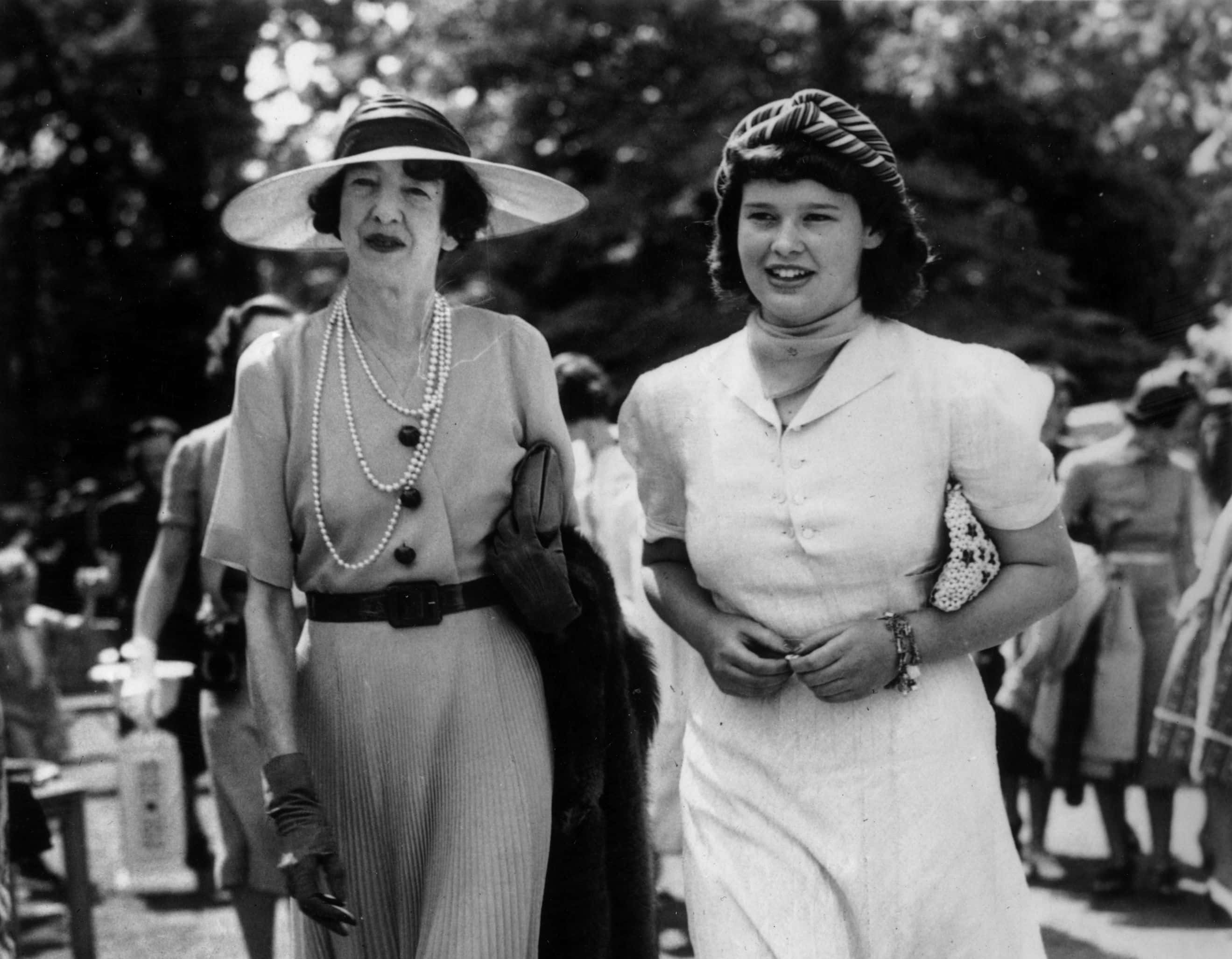
106. Lonely From the Start
In 1908, Pu Yi was chosen to be emperor by Empress Dowager Cixi when she was on her deathbed and he was just under three years of age. From there, he was separated from his family and placed inside the Forbidden City. He would spend the next eleven years living inside the elaborate palace, forbidden to leave, even after he’d abdicated all his power and was an emperor in name only. He was the subject of the 1987 film The Last Emperor.

107. This Story Has a Happy Ending
After receiving a Western education, marrying, and being used as a pawn by the Japanese forces that took power in China, Pu Yi was eventually captured by the Soviets and Chinese Communists. After a period of internment and re-education, Pu Yi was allowed his freedom in the form of a humble existence. Reportedly, he found more joy in the simple life of being a gardener than he ever did as China's final emperor.

108. Margaret Tudor
Margaret Tudor was widowed in 1513 when her husband was slain by forces commanded by her own sister-in-law. A year later, she eloped with a new man—but the union would soon turn into a living nightmare. When she married the Earl of Angus, she gave up her right to regency in Scotland and had to flee back to England with the help of her brother Henry VIII. When Margaret returned after a year to be with her husband, she made a disturbing discovery: he’d already begun living with another woman...and he was paying for his new life with Margaret’s money.

109. Heart of Darkness
For its time, Catherine of Aragon’s cause of passing was ambiguous. Her embalmer noticed the body was in perfect health—save for her heart, which had turned black. That led some people to whisper about poison. Today, historians agree generally agree that Catherine passed of heart cancer, which—considering the circumstances of her life—appears too poetic to be true.
Sources: 1, 2, 3, 4, 5, 6, 7, 8, 9, 10, 11, 12, 13, 14, 15, 16, 17, 18, 19, 20, 21, 22, 23, 24, 25, 26, 27, 28, 29, 30, 31, 32, 33, 34, 35, 36, 37, 38, 39, 40, 41, 42, 43, 44, 45, 46, 47, 48, 49, 50, 51, 52, 53, 54,











